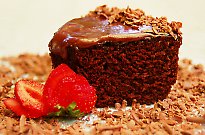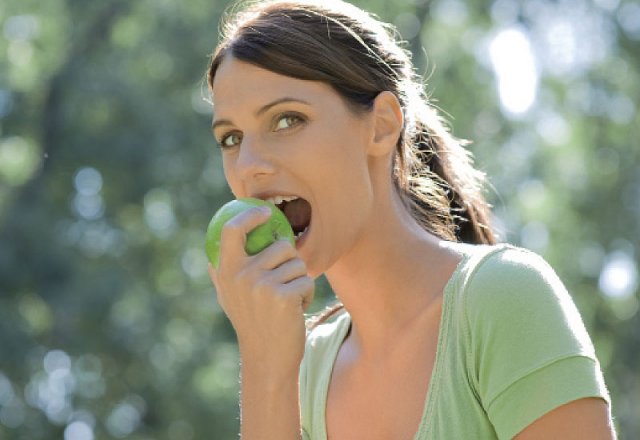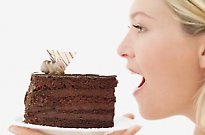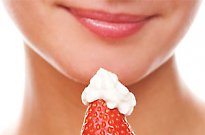
Not so sweet…

When we think of sugar and the foods containing it, we tend to think of a treat. A chocolate biscuit with a cup of tea, an ice cream on a hot summers day, a slice of birthday cake or a cold, refreshing can of soda.
We don’t so much consider, that refined sugars are present in large amounts in many of the foods we consume on a daily basis. Liz Nowosad looks a little deeper into the implications of high sugar levels on our health.
Its not just tooth decay and obesity that a high intake of the white stuff can be blamed for. Sugar has been linked to various cancers – including breast, ovarian, prostate, rectum, pancreatic, lung, gallbladder and stomach cancers, as well as diabetes, premature ageing, depression, gallstones, hemorrhoids, osteoporosis… the list goes on and on. And unfortunately, it is highly addictive. According to David Gillespie, author of Sweet Poison and The Sweet Poison Quit Plan, “Sugar is as addictive as nicotine, so breaking its grip requires some techniques.”
Some experts go as far as to liken sugar to class-A drugs. Dr Candace Pert, research professor in the physiology and biophysics department at Georgetown University Medical Center in Washington DC, deems sugar, a highly purified plant product, potentially as addictive as heroin. “Relying on an artificial form of glucose – sugar – to give us a quick pick-me-up is analogous as, if not as dangerous as, shooting heroin.”
There is little to be said in the defense of refined sugar, except perhaps, that it tastes nice. Humans are principally attracted to sweet tasting foods and while this inherent attraction towards sweet foods worked well for early man (most things in nature that are sweet are not poisonous) it is unfortunately not working out so well for us. This is because we have learnt how to extract the sweetness of otherwise nutritional foods, discarding the good bits and keeping the sweet tasting, not so good bits. When we refine sugars, we are in essence cheating nature by isolating the sweetness and discarding the rest, including the fiber, the vitamins and the minerals.
Despite all of the above, a degree of sugar in our diet is essential to our survival – the right stuff, not the white stuff. It’s what fuels brain cells and hard-working muscles and it can be stored as energy, ready for release at precisely the moment the body needs it.
It’s when levels rise too high or sink too low that blood sugar has serious, negative consequences for weight, mood and health. Knowing what foods to eat to provide the right type of slow releasing sugars is therefore very important. In fact, keeping blood sugar balanced is possibly the most important factor in maintaining mood, energy levels and a healthy weight.
Finding the right balance
According to Gillespie, fructose is the major cause for concern. “When we eat fat and protein, a hormone is released by our gut that tells us to stop eating when we’ve had enough. And when we eat carbohydrates, a different hormone is released by our pancreas that does the same thing. Except there is one carbohydrate that doesn’t trip the appetite control switch: fructose.” Most of the carbohydrates we eat, such as vegetables, brown rice, wholemeal breads and wholemeal pastas are made up of chains of glucose. When glucose enters the bloodstream, the body releases insulin to help regulate it. Fructose, on the other hand, is processed in the liver. When too much fructose enters the liver, the liver is unable to process it all fast enough for the body to use as sugar. So, it starts making fats from the fructose and sends these fats off into the bloodstream as triglycerides. “Before you even finish your glass of apple juice, the fructose in your first mouthful will be circulating in your bloodstream as fat,” says Gillespie. And it doesn’t stop there. If there is too much fat circulating in our bloodstream, then the hormones like insulin, CCK and leptin that tell us we have eaten enough are weakened. Since the signal to stop eating cant ‘get through’, we continue ploughing through the high fructose food, the fat in our bloodstream continues to increase, the ‘stop eating’ signals get weaker etc etc. Before you know it, you’ve polished off the whole packet of biscuits, bag of lollies or block of chocolate and you feel stuffed. Sound familiar?
SUGARS MANY GUISES
- Brown sugar
- Corn syrup
- Demerara Sugar
- Dextrose
- Free Flowing Brown Sugars
- Fructose
- Galactose
- Glucose
- High Fructose Corn Syrup
- Honey
- Invert Sugar
- Lactose
- Malt
- Maltodextrin
- Maltose
- Maple syrup
- Molasses
- Muscovado or Barbados Sugar
- Panocha
- Powdered or confectioner's sugar
- Rice Syrup
- Sucrose
- Sugar (granulated)
- Treacle
- Turbinado sugar
So how can we avoid fructose?
Fructose is relatively scarce in nature. It is found primarily in very ripe fruits, which is why it is often called ‘fruit sugar’ – do not be fooled into thinking that this makes it healthy! While the small levels of fructose found in an apple will do you no harm, the concentrated amounts found in the processed products on our supermarket shelves might. White table sugar, which features in the ingredients list of many products is made up of one half glucose and one half fructose.
Essentially, all fructose works the same in the body, whether it comes from corn syrup, cane sugar, beet sugar, strawberries, onions, or tomatoes. Only the amounts are different and while a cup of chopped tomatoes contains approx. 2.5 grams of fructose, a can of regular fizzy drink or a glass of apple juice contains about 23 grams.
A small amount of fructose, such as the amount found in most vegetables and fruits, is not a bad thing. In fact, there is evidence that a little bit may help your body process glucose properly. However, consuming too much fructose at once seems to overwhelm the body's capacity to process it. The diets of our ancestors contained only very small amounts of fructose, but these days, it’s estimated that about 10% of an average diet comes from fructose.
Careful reading of labels is necessary to know how much added sugar you are getting. Sugar goes under many different guises, like rice syrup, organic dehydrated cane juice or fruit juice concentrates some of which, sound quite wholesome. In the case of fruit juice concentrates, by the time they are concentrated, very little of the fruit remains but the sugar.
For a happy and healthy life, every effort should be made to balance blood sugar levels. One way to help regulate them is exercise, but the most important way is to limit sugar intake in our diets. The best way to break the sugar habit is to avoid concentrated sweetness in the form of sugar, sweets, sweet desserts, chocolate, dried, processed fruit, sugary cereals, jams, fizzy drinks and neat fruit juices. When sweetness in food is gradually reduced, the taste buds adjust and get used to the less intensely sweet flavour. If what you are eating tastes sweeter than a grape or banana, put it down and walk away! NH
BREAK THE ADDICTION!
In The Sweet Poison Quit Plan, David Gillespie claims that there are 5 steps to breaking an addiction to refined sugars and fructose.
Step 1 Have the right attitude – if you see removing sugar from the diet as deprivation, you will never succeed. Instead, try and embrace the freedom and health benefits of no longer being a ‘sugarholic’.
Step 2 Eliminate habits associated with eating sugar – document your sugar habits, like snacking on lollies at the movies and create strategies for keeping your lifestyle, but getting rid of the sugar element. E.g. go to the movies, but snack on a bag of mixed nuts instead.
Step 3 Eliminate sugar from your food supply – Educate yourself, know what ingredients to look for. As a hint, the words syrup, sweetener, and anything ending in ‘ose’ usually mean sugar.
Step 4 Withdraw from sugar – Intentionally and purposefully eat your last mouthful of sugar. Know that withdrawal symptoms are likely, but that they will pass.
Step 5 Re-stock and get ready for the rest of your life – as a general rule, avoid ‘low-fat’ foods (they tend to replace the fat with sugar and salt). Shop predominantly around the outside of the supermarket, filling up your trolley with fruits (berries, apples and oranges are good choices), veggies, nuts, meat, fish, eggs, whole meal breads, whole meal pastas and brown rice, unsweetened dairy products, butter and cheese.


